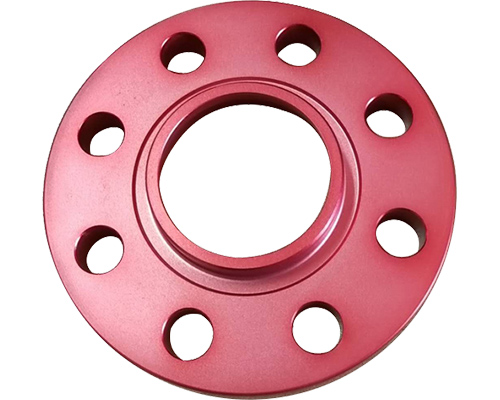 | 24-hour consultation hotline 13815991011 |
Company Name: Taixing Pengsheng Forging Co., Ltd.
Contact: Zhang Peng (General Manager)
Contact: 13815991011
Tel: 0523-87433837
E-mail: 878711040@qq.com
Fax: 0523-87433080
Website: en.txpsdz.com
Address: Xinhua Group, Zhanggong Village, Hongqiao Town, Taizhou City
Forging is mainly classified according to the forming method and the deformation temperature. Forging according to forming method can be divided into two categories: forging and stamping; forging temperature can be divided into hot forging, cold forging, warm forging and isothermal forging.
Hot forging is a forging performed above the metal recrystallization temperature. Increasing the temperature can improve the plasticity of the metal, which is beneficial to improve the intrinsic quality of the workpiece and make it less prone to cracking. The high temperature also reduces the deformation resistance of the metal and reduces the tonnage of the required forging machinery. However, there are many hot forging processes, the workpiece precision is poor, the surface is not smooth, and the forgings are prone to oxidation, decarburization and burning.
Cold forging is forging at a temperature lower than the recrystallization temperature of metal. Generally speaking, cold forging refers to forging at normal temperature, and forging at higher than normal temperature but not exceeding recrystallization temperature is called temperature. Forging. The precision of warm forging is higher, the surface is smoother and the deformation resistance is not large.
The workpiece formed by cold forging at normal temperature has high shape and dimensional precision, smooth surface, less processing steps, and is convenient for automated production. Many cold forged and cold stamped parts can be used directly as parts or articles without the need for cutting. However, in cold forging, due to the low plasticity of the metal, cracking is likely to occur during deformation, and the deformation resistance is large, and a large tonnage forging machine is required.

Isothermal forging is the constant temperature of the billet throughout the forming process. Isothermal forging is to take advantage of the high plasticity of certain metals at equal temperatures or to achieve specific microstructure and properties. Isothermal forging requires constant maintenance of the mold and billet at a constant temperature, and is only used for special forging processes such as superplastic forming.
Forging can change the metal structure and improve metal properties. After the ingot is hot forged, the original cast loose, pores, microcracks, etc. are compacted or welded; the original dendrites are broken to make the grains fine; at the same time, the original carbide segregation and unevenness are changed. Distribution, so that the organization is even, so that the internal compact, uniform, fine, comprehensive performance, reliable use of forgings. After the forging is deformed by hot forging, the metal is a fibrous structure; after cold forging deformation, the metal crystal is ordered.
The forging production process includes forging blanking before forming, forging billet heating and pretreatment; heat treatment, cleaning, calibration and inspection of the workpiece after forming. Commonly used forging machines are forging hammers, hydraulic presses and mechanical presses. The hammer has a large impact speed, which is good for metal plastic flow, but it will produce vibration. The hydraulic machine is forged by static force, which is good for forging metal and improving the structure. It works smoothly, but the productivity is low. The mechanical press has a fixed stroke and is easy to mechanize. And automation.
13815991011
| No public
|
|
|
Company Name: Taixing Pengsheng Forging Co., Ltd.
Address: Xinhua Group, Zhanggong Village, Hongqiao Town, Taizhou City
Fax: 0523-87433080
Mobile: 13815910111
E-mail: 878711040@qq.com